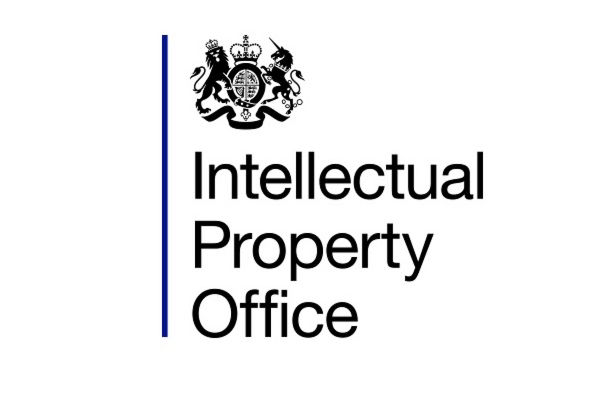How to get into M&A advisory services
Are you an accountant looking to break into the exciting world of mergers and acquisitions (M&A) advisory services? It can be a lucrative and rewarding career but getting started in M&A advisory can be daunting.
In this blog we’ll cover the key elements needed to understand M&A advisory services, including the differences between investment bankers and M&A advisors, why accountants should consider getting into mergers and acquisitions advisory, and more.
What are M&A advisory services?
M&A advisory services are a professional service designed to help corporations, private equity firms, and other entities execute mergers and acquisitions. M&A advisory services provide clients with the best possible options for their merger or acquisition, from pre-transaction consulting such as market analysis and valuation advice to post-transaction support such as legal advice and assistance with integration.
M&A advisors also specialize in structuring deals to maximize value while minimizing risk. It is important for M&A advisors to understand the client’s goals for the transaction and how the company will benefit from it. This includes understanding the financials of each party involved, including debt levels, interest rate considerations, tax implications, and more.
Additionally, M&A advisors also offer expertise on regulatory issues that may arise during a transaction. They can advise clients on filing requirements with securities regulators, potential antitrust concerns, or potential competition law issues that may arise during a merger or acquisition process.
Finally, M&A advisors play an important role in facilitating negotiations between parties involved in a transaction. They can provide guidance on negotiating terms of agreements such as purchase price adjustments or earnouts that may be necessary for successful completion of an M&A deal.
By understanding all aspects of a deal – both financial and non-financial – M&A advisors can ensure clients receive the best outcome when executing their merger and acquisition transactions.
How does M&A advisory compare with tax advisory, business advisory, or accounting advisory services? While M&A advisors focus on mergers and acquisitions, there are some similarities among all of the practice areas, chiefly providing forward-looking guidance and fostering more meaningful client relationships.
Why should accountants get into M&A advisory?
An accountant’s background provides the ideal foundation to understand and navigate complex transactions. With their expertise in financial due diligence and valuations, accountants can effectively complete deals while delivering high-quality results for their clients.
By getting involved in M&A advisory, accountants gain immense personal growth opportunities through diverse skillsets and experiences. They can become more involved in strategic decision making through tasks like developing financial models, conducting due diligence, structuring deals, negotiating terms, constructing exit strategies or providing post-merger integration support. Furthermore, they’ll build relationships with key players in the industry, which could open up new career opportunities down the line.
Calculating M&A advisory fees
M&A advisory fees are one of the primary costs associated with a successful merger or acquisition. As such, it is important to accurately calculate the fees before entering into an agreement. There are several types of fee structures commonly used by M&A advisors, and it is important to understand each option in order to determine which is most suitable for your particular transaction. Let’s take a closer look.
- Success fees: Success fees are often calculated as a percentage of the deal’s value. This allows the advisor to benefit in proportion to their contribution to the success of the transaction.
- Retainer fee: In some cases, an additional retainer fee may also be charged upfront and not based on the outcome of the deal.
- Hourly fees: Hourly fees may also be charged depending on how much work is required from the advisor.
- Flat fees: Flat fees can also be negotiated between parties and should be taken into consideration if you anticipate needing additional services beyond what would typically be provided under a success or retainer fee structure.
- Value pricing: A growing number of firms are shifting to value-based pricing, which is a great way to help ensure you are being properly compensated for your expertise. When you need to develop a specific price based on each client’s unique needs and perceived value of your services, you need more time to truly understand what services will benefit them most.
When working with both buyers and sellers, potential conflicts of interest should be identified upfront and addressed accordingly. For example, if an M&A advisor is providing advice to both parties in a transaction, they must ensure that their advice does not favor one party over another. Additionally, both parties must agree on who will cover any applicable taxes or regulatory charges that arise during the process, which could impact how much money each side has available for payment at closing time.
Finally, financial analysis should be conducted prior to agreeing upon a fee structure so that all parties involved can have realistic expectations about how much money will need to be allocated for M&A advisory services throughout the course of a deal. By conducting this analysis beforehand, everyone involved will have a better idea of what kind of return they can expect from their investment in professional services.
What is the difference between an investment banker and M&A advisor?
Investment bankers and M&A advisors are similar in their service offerings in that both can identify potential buyers, outline details of the deal, and close the transaction. There are, however, some notable differences.
Investment bankers are focused on helping companies, governments, and other entities raise money for improvements and expansion. M&A advisors tend to be more consultative in nature and can be an ideal fit for companies seeking guidance before, during, and after the M&A process.
In fact, guiding business owners after a sale is completed is one of the more notable differences between an investment banker and M&A advisor. After a deal is completed, M&A advisors can, for instance, help former business owners navigate post-sale or post-merger tax implications and investing options. Investment bankers, on the other hand, are generally transaction driven.
Investment bankers and M&A advisors are also different in that while investment bankers may work on a deal from start to finish, M&A advisors may instead focus on more specific aspects for clients. M&A advisors may, for example, perform due diligence for the client or conduct detailed valuations.
Making the transition to M&A advisory services
One of the most important steps when transitioning into M&A advisory is to have a thorough understanding of what it entails. This includes gaining an understanding of the legal aspects related to mergers and acquisitions, such as due diligence, closing documents, post-closing adjustments, etc., as well as staying up-to-date on regulations in different jurisdictions.
It also involves getting acquainted with financial models used in M&A deals, such as discounted cash flow models and other valuation techniques. Having a good grasp on these topics will make it easier to evaluate potential advisory opportunities and advise clients accordingly.
Networking is also a crucial part of entering into this field. Joining professional organizations and attending conferences provide great opportunities to build relationships with individuals in the industry who may become future clients or partners in deals.
Leveraging a solution that provides your firm with a proven roadmap for shifting your business model to support advisory centered client relationships can also prove beneficial. Consider a solution that not only provides access to exclusive tools and resources but also access to a community of like-minded professionals.
With a market-proven methodology, Thomson Reuters Practice Forward® offers content, tools, and guidance for forward-thinking accounting firms like yours who are interested in expanding into M&A advisory services. Start your journey to mergers and acquisitions advisory services today.
For more information on advisory services, read “Accounting advisory: What you need to know.”






